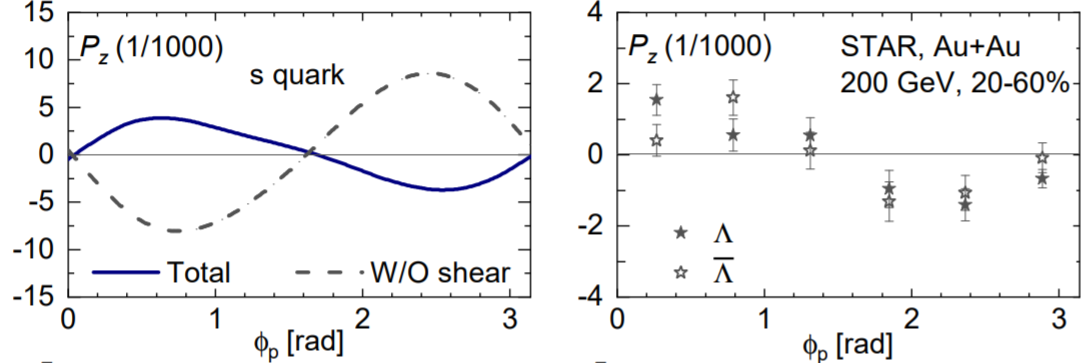Scientists Discover Spin Polarization Induced by Shear Flow

Figure 1. left: the polarization induced by the vortical flow; right: the polarization induced by the shear flow. Red and yellow arrows represent the spin and momentum directions respectively. (Image by LIU Shuai)
Chinese researchers recently discovered a new effect that can generate spin-polarization in fluid. The new effect, which is called “shear-induced polarization (SIP),” predicts that shear flow can induce polarization in the momentum space.
This research was conducted by scientists from the Institute of Modern Physics (IMP) of the Chinese Academy of Sciences (CAS), together with their collaborators at Peking University and Central China Normal University, who studied polarization induced by shear flow for the first time. Their discoveries were published in Physical Review Letters and Journal of High Energy Physics.
In flowing fluid, one may observe some special patterns of the flow field, such as those formed by the vortical flow, which rotates around a center and is related to the orbital angular momentum of the fluid. Due to spin-orbit coupling, the orbital angular momentum of the vortical flow can transfer to the spin of a particle. This vorticity-induced spin polarization has been observed in a quantum fluid.
Besides vortical flow, shear flow is also quite common in fluids. However, it is far less intuitive how shear flow is related to angular momentum. Thus, how it affects spin polarization has never been investigated before.
In this research, using relativistic many-body quantum theory and linear response theory, the researchers systematically studied spin polarization in a hydrodynamic medium. They discovered that shear flow, although not intuitively related to orbital angular momentum, also generates spin polarization in the momentum space through spin-orbit coupling.
Employing a relativistic hydrodynamic model, the researchers then investigated how this new SIP effect manifests in relativistic heavy-ion collisions. Since previous studies do not include the SIP effect, their predictions always have the opposite sign compared to experimental observations. This discrepancy is sometimes called the “spin-sign puzzle” and has bothered the research community for several years.
However, once the SIP effect is included, the strange quark polarization predicted by the theory demonstrates a pattern similar to the measured Lambda polarization in experiments.
Considering the close relationship between strange quark polarization and Lambda polarization, the current study is expected to be an essential step toward the final solution of the spin-sign puzzle.
This work was supported by the National Natural Science Foundation of China and the Strategic Priority Research Program of CAS.

Figure 2. left: the theoretical calculation for strange quark polarization that includes the SIP effect (solid) or does NOT include the SIP effect (dashed); right: Lambda polarization measured by experiments. (Image from PRL)
Contact Information
Institute of Modern Physics
Email: fangliu@impcas.ac.cn


 甘公网安备 62010202000713号
甘公网安备 62010202000713号


